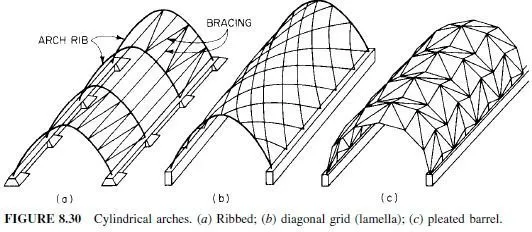Failures in service rarely, if ever, occur in properly made welds of adequate design.
If a fracture occurs, it is initiated at a notchlike defect. Notches occur for various reasons.
The toe of a weld may form a natural notch. The weld may contain flaws that act as notches.
A welding-arc strike in the base metal may have an embrittling effect, especially if weld metal is not deposited. A crack started at such notches will propagate along a path determined by local stresses and notch toughness of adjacent material.
Preheating before welding minimizes the risk of brittle failure. Its primary effect initially is to reduce the temperature gradient between the weld and adjoining base metal. Thus, there is less likelihood of cracking during cooling and there is an opportunity for entrapped hydrogen, a possible source of embrittlement, to escape. A consequent effect of preheating is improved ductility and notch toughness of base and weld metals, and lower transition temperature of weld.
Rapid cooling of a weld can have an adverse effect. One reason that arc strikes that do not deposit weld metal are dangerous is that the heated metal cools very fast. This causes severe embrittlement. Such arc strikes should be completely removed. The material should be preheated, to prevent local hardening, and weld metal should be deposited to fill the depression.
Welding processes that deposit weld metal low in hydrogen and have suitable moisture control often can eliminate the need for preheat. Such processes include use of low-hydrogen electrodes and inert-arc and submerged-arc welding.
Pronounced segregation in base metal may cause welds to crack under certain fabricating conditions. These include use of high-heat-input electrodes and deposition of large beads at slow speeds, as in automatic welding. Cracking due to segregation, however, is rare for the degree of segregation normally occurring in hot-rolled carbon-steel plates.
Welds sometimes are peened to prevent cracking or distortion, although special welding sequences and procedures may be more effective. Specifications often prohibit peening of the first and last weld passes. Peening of the first pass may crack or punch through the weld.
Peening of the last pass makes inspection for cracks difficult. Peening considerably reduces toughness and impact properties of the weld metal. The adverse effects, however, are eliminated by the covering weld layer (last pass).
(M. E. Shank, Control of Steel Construction to Avoid Brittle Failure, Welding Research Council, New York; R. D. Stout and W. D. Doty, Weldability of Steels, Welding Research Council, New York.)



